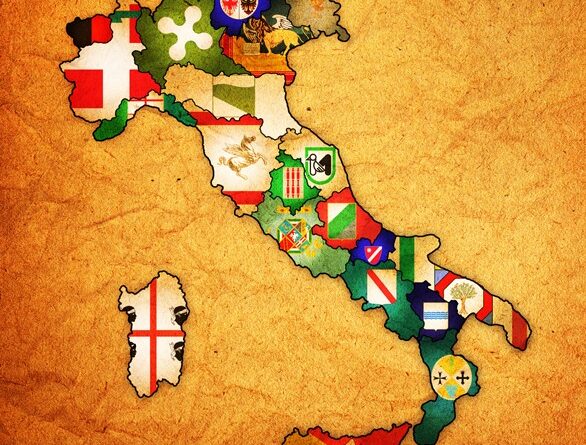Unveiling the Past: A Historical Overview of Italy’s Regions

Italia (which may have originated as a Greekized form of Italic Vitelia or “calf land”) initially refereed only to the southern half of Italy’s “toe”, yet gradually extended as more people settled there; by 450 BCE it encompassed all regions subsequently settled by Bruttii; 400 CE also encompassed Lucania as part of it. Campania was added after 325, and by Phyrhus’ time Italia meant everything south of Liguria and Cisalpine Gaul; however, political unity in this region only occurred after the Social War. Cisalpine Gaul was not officially integrated into Italy until Augustus’ time when Italy reached its natural Alpine boundaries. Unofficially however, throughout Polybius’ lifetime and beyond the whole region south of the Alps has been commonly known as Italy despite any administrative divisions that may exist…
Italy was uniquely equipped to support human life and welcome invaders, and did so from early times onwards. Traces of Neanderthal as well as Palaeolithic humans have been discovered, while Neolithic people, Chalcolithic Terramarincolians, and Iron-using Villanovans remain abundant. Long before Rome rose to power, Italy was already densely populated and civilized throughout. Illyrian immigrants such as Veneti, Picentes and Messapii settled along Italy’s east coast; some occasionally penetrated to its western regions. Hardy Sabelli and their Umbrians and Volsci relatives held onto and expanded from mountainous central regions. Magna Graecia comprised Magna Graecia while Gauls began settling c. 400 in the north. Ligurians were an ancient Neolithic group who originally held more land; Etruscans; Latini (including Falisci and Hernici), Aurunci-Ausones Oenotris (= Sicels?), and Aurunci-Ausones Oenotris Oenotri (= Sicels?). Each people group differed greatly in race, language and civilization from each other; Italy’s mountainous geography only further highlighted these distinctions between them.
But eventually they were united under Rome’s hegemony; her political unification of Italy took much longer, finally being completed during Augustus’ lifetime; romanization, however, would take much longer and would never fully occur.
After unifying Italy, Augustus divided it into eleven administrative districts that correspond to modern-day regions: [These are listed within brackets].]
Latium; Campania; Picentini district is situated within Lazio & Campania and Hirpini District lies within Apulia Calabria’s Hirpini area in Hirpini District in Apulia Calabria’s Hirpini region (Lucania: Ager Bruttius), Puglia; Souther Campania Basilicata Calabria: Hirpini area and Souther Campania Basilicata Calabria Ager Bruttius reside southernmost Campania Basilicata Calabria], Marrucini Marsi, Paeligni Aequiculi Vestini and Sabini reside there (eastern Campania Molise; Abruzzo). [Eastern Campania Molise; Abruzzo]
Picenum Praetutti District. [northeastern Abruzzo and southern Marche].
Umbria; Ager Gallicus [Umbria; Northern Marche]. Etruria. [Northern Lazio / Toscano]. Gallia Cispadana Gallia Cispadana Gallia Cispadana Emilia-Romagna >> Liguria. [Liguria and southern Piemonte].
Venetia; Istria; Cenomani district are parts of eastern Lombardia that fall within Veneto, Friuli, Trentino as well as Westernmost Slovenia & Croatia and eastern Lombardia respectively. Gallia Transpadana lies to its northeast, while Valle d’ Aosta to its west lies within northern Piemonte & western Lombardia respectively.
This arrangement persisted until Constantine’s time, when Italy began including all of the islands by default.
